Maybe Palermo is not among the top tourist destinations in Sicily, but it is certainly one of the most interesting cities. With its one million inhabitants, it is a buzzing Mediterranean center with an authentic, welcoming and mysterious atmosphere.
No wonder, Palermo – called the „Kingdom of the Sun“ by invading Normans in the 12th century, has been a cultural melting pot since Phoenicians and Greeks fought over it in the 5th and 6th centuries BC. As it sits close to where Europe ends and Africa begins, Palermo witnesses the scars and the glories of centuries of Roman, Byzantine, Arab and Norman domination. But it finally got its own identity and it was proclaimed Italian Capital of Culture in 2018.
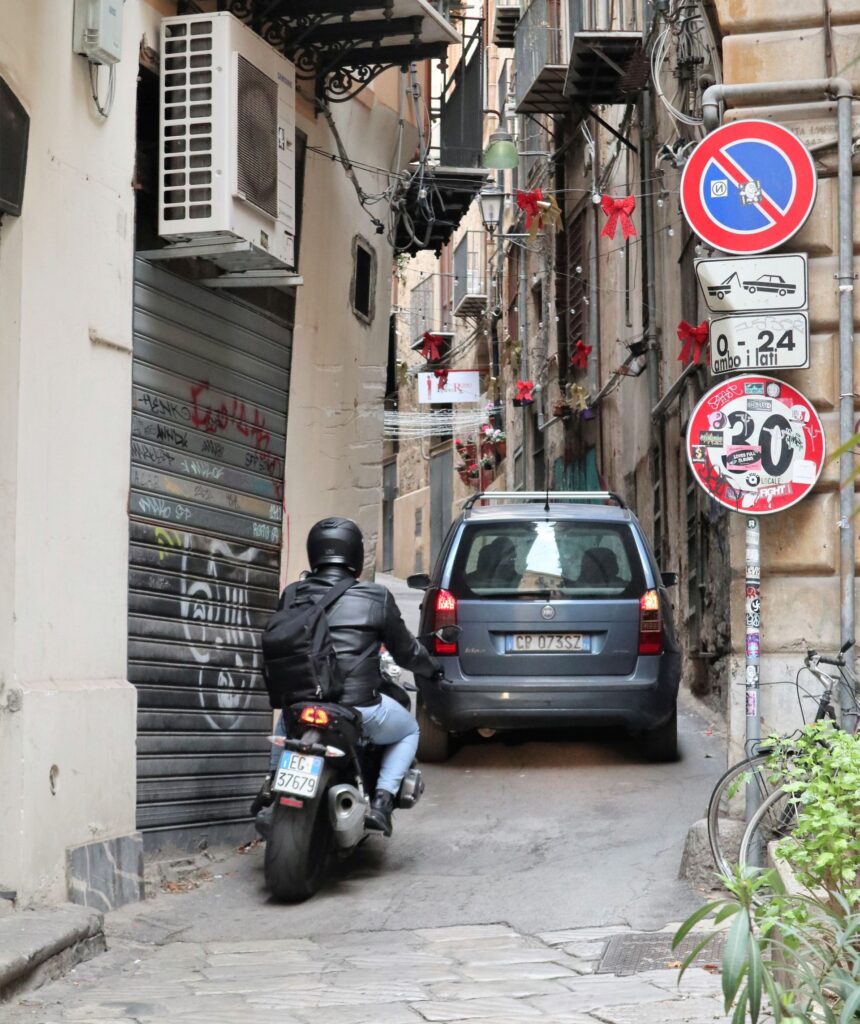
Honestly speaking, when we entered Palermo during our Sicily trip in December last year, we were unpleasantly surprised. Following our GPS in order to find the booked accommodation, we slowly made our way through boulevards full of honking cars, trucks and whining scooters. Approaching the historical center, the streets got narrower and narrower, there were road works everywhere, and finally we gave up, totally exhausted! Was this the city where we wanted to spend a few beautiful days? We called our host: our accommodation appeared to be at a distance of 200 m only and she guided us through a few crooked alleyways to – yes! – a spacious parking lot close to a comfortable studio just behind the Cathedral.
As all the main attractions of Palermo were at walking distance from our B&B accommodation, we enjoyed roaming through the historical center and exploring the landmarks, but also the hidden corners. I will try to give you an impression of the most important attractions and the cozy atmosphere that is so typical for Palermo.

The Royal Cathedral
Dating back to 1185, Palermo’s Cathedral is part of the Arab-Norman UNESCO World Heritage site. It shows a blend of Western, Islamic and Byzantine architectural styles and cultures. No wonder, it was built in a sacred area, where the Phoenicians, Byzantines and Arabs had previously built their own places of worship. By the way, you can still see inscriptions from the Quran on one of the portico’s columns.
From outside, the architecture is exquisite (see also picture 1). We could not get enough of watching all the details of the façade, especially in the evening, when the Cathedral was illuminated from all sides.
Of course, we also visited the inside of the church (free admission), which appeared to be rather plain if compared to the ornate facade. However, it is also possible to visit the rooftops – which this is not recommended for people with heart problems, claustrophobia, etc.
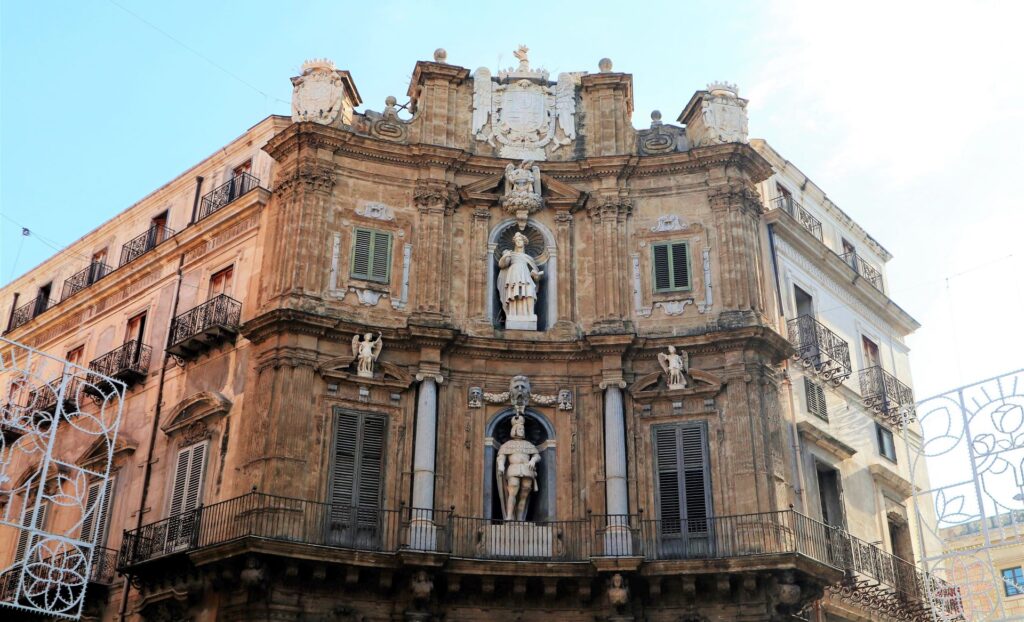
Quattro Canti (Four Corners Square)
At the intersection of two of the city’s busiest streets, Via Maqueda and Corso Vittorio Emanuele (only for pedestrians) is Piazza Vigliena, whose four Baroque corners mark the heart of the historical quarter. The square is locally known as Quattro Canti and the Baroque structures were built in 1608, featuring four kings, four seasons, four fountains, four palaces, four saints, etc.
During our walking tours through the historical center, it was inevitable to cross Quattro Canto several times. The square was always full of life, especially with young people laughing and talking and listening to street music. Most of them continued their walk to Corso Vittorio Emanuele or went for an “aperitivo” and a snack to one of the pubs with open-air terraces in Via Maqueda.
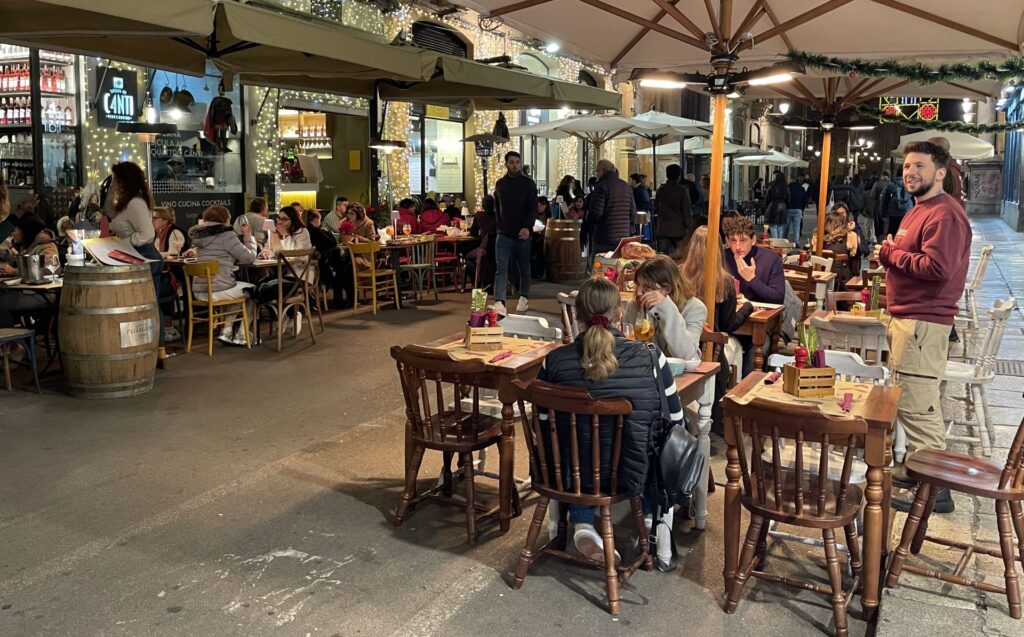
Via Maqueda
We really liked this lively street – also known as “Strada Nuova” (New Street) with its pubs, restaurants and cozy terraces. New Street? Funny, as it was built around 1600!
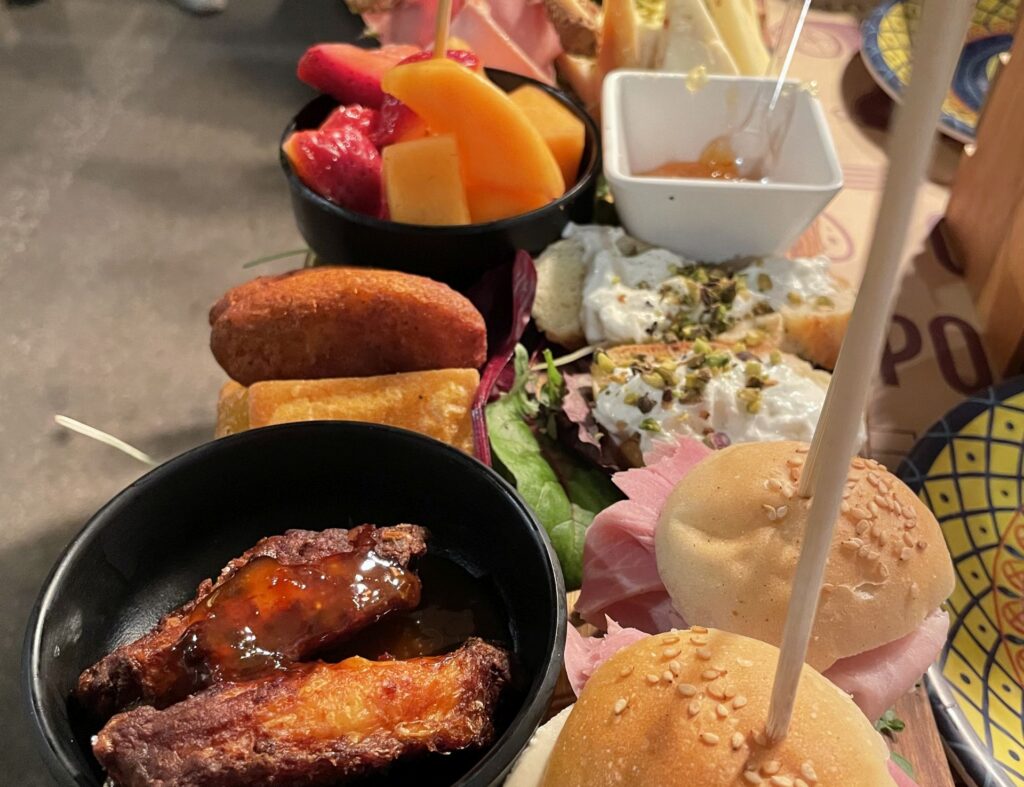
It was clear that an “aperitivo” before dinner is a “must” for the locals. And guess what? Most people ordered an Aperol Spritz together with some snacks or a plate with various local products (prosciutto, sausages, olives, home-made bread, fruit….). Of course, we were glad to join them!
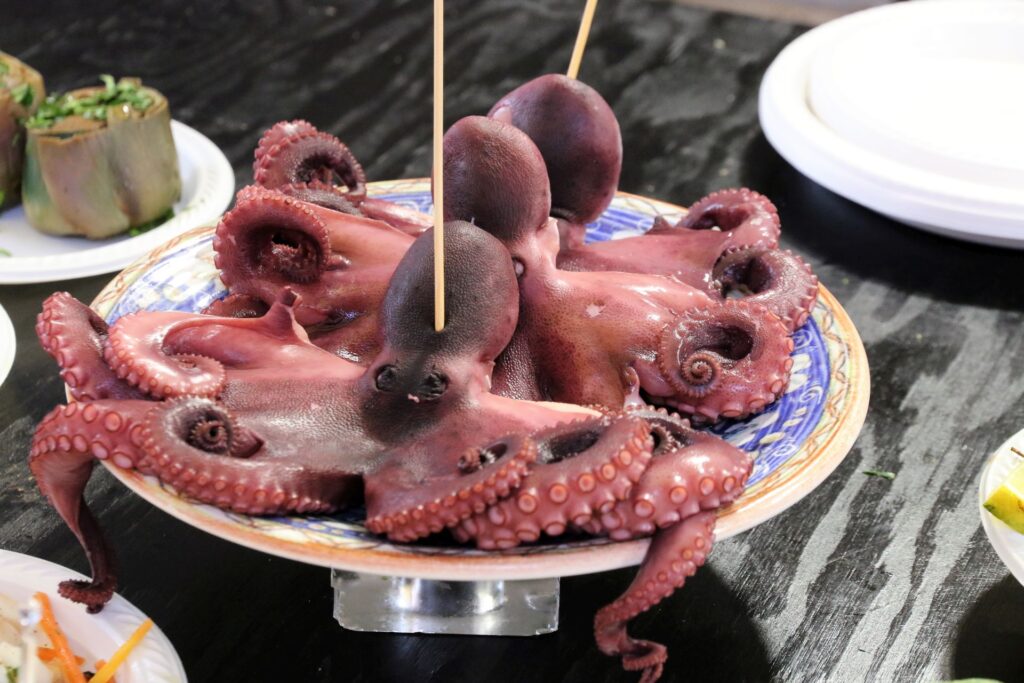
Mercato del Capo
Palermo has some great markets, but one of the best is the Mercato del Capo that dates back to the Middle Age. Like most food markets, there are numerous vendors selling fruit, vegetables, seafood and fish, sweets, wines …
Their market stalls are always attractive and offer a colorful spectacle of food products. But there are also lots of street food sellers who offer tables where you can take a snack and drink a beer.
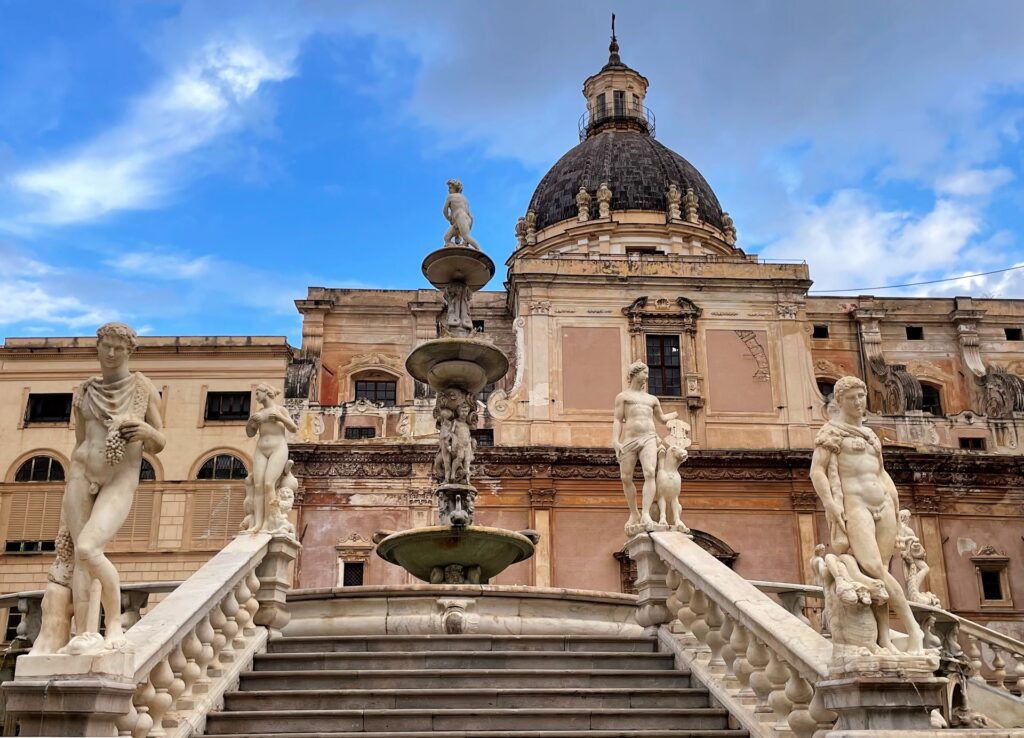
Piazza della Vergogna
Also close to Quattro Canti is the magnificent Piazza Pretoria, also known as Piazza della Vergogna (Square of Shame), because of the naked statues of nymphs, tritons and leaping river gods, adorning the beautiful circular fountain in front of the Palazzo Pretorio (City Hall).
There is a nice story about this fountain: it was designed and built in Florence in the 16th century and stood in the garden of a local nobleman, but it was sold to the municipality of Palermo after the nobleman got financial problems. The fountain was dismantled into 644 parts and sent to Palermo by ship.
But the magnificent fountain managed to upset many inhabitants of Palermo, who were thus obviously more conservative than the citizens of Florence. They disliked the sculptures with the naked figures that adorned the fountain, especially because the fountain was built near the church. Despite the critics, the fountain remained as it was, but it got the local nickname Fountain of Shame (Fontana della Vergogna).
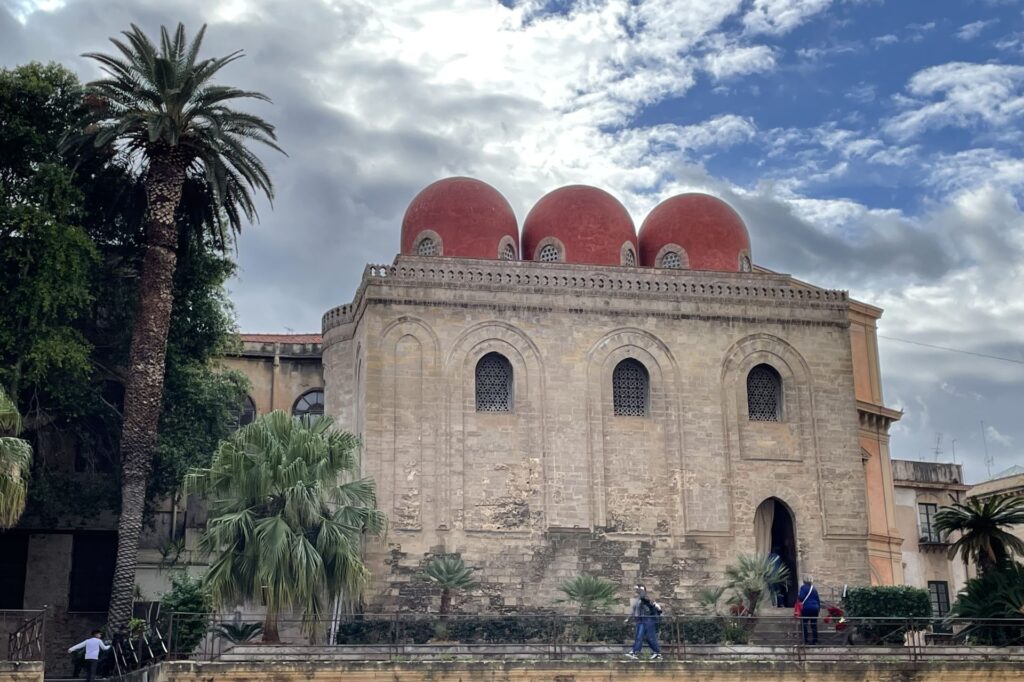
Piazza Bellini
In the streets around the square, or more exactly at Piazza Bellini, we saw three stunning 12th-century churches: the Arab-Norman churches of Santa Maria dell’ Ammiraglio and San Cataldo (both UNESCO World Heritage sites), and the Baroque 16th-century Chiesa di Santa Caterina. Another important building on the square is Teatro Bellini, an opera house that was inaugurated in 1890.
But in my opinion, the most impressive building at the square is the Church of San Cataldo, which looks like a mosque with its distinct red domes (see picture). However, it is a Catholic church, which was erected in 1154 as a notable example of Arab-Norman architecture. The interior is simple but extraordinary, with naked walls, faced by columns with Byzantine style arcades.
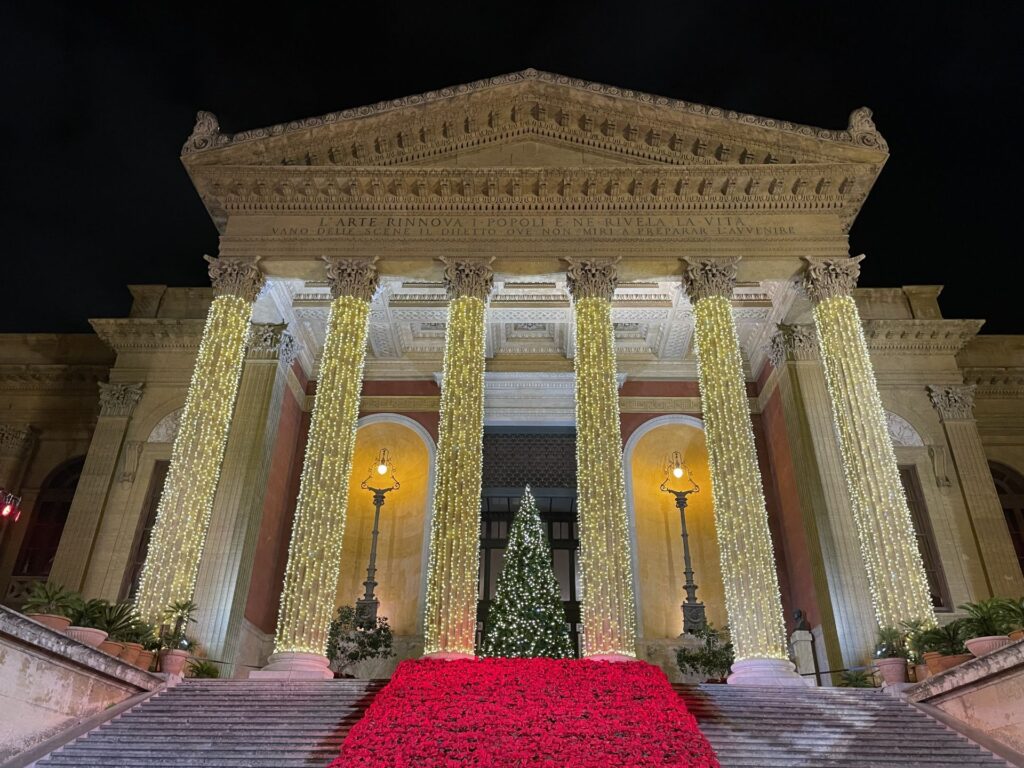
Teatro Massimo
This spectacular structure is the largest opera house in Italy with more than 1,300 seats. It is said to have perfect acoustics and each year more than 130 music, opera and dance events take place in this theatre. It was infamously closed for 23 years (from 1974 to 1997) for renovations, which were delayed by mafia corruption.
The theatre was beautifully illuminated and decorated with thousands of Christmas flowers. Of course, many passers-by took a selfie with such a magnificent background.
And finally, there is a last attraction in Palermo that is not for everyone, but for us it was a place worth visiting:

Capuchin Catacombs
This building (at a 30 minutes’ walk from the Cathedral) was a burial site for the Cappuccino monks belonging to the Church of Santa Maria Della Pace. Between the 17th and 19th century, more than 8,000 monks were buried here, mummified in their clothes, including some of Palermo’s wealthy families who wanted to be buried in the catacombs.
The conservation status of the numerous corpses makes the catacombs of the Convent of the Capuchin Friars a very impressive, but also a scary place. A place where the living meet the dead. Not to be recommended for faint-hearted tourists – I must admit that I felt quite dizzy after this macabre spectacle (photo: Atlas Obscura) and I would not repeat it!
This is how we spent three phantastic days in Palermo, a city full of beautiful cultural and historical monuments, but also a city of contrasts.

Sure, Palermo still has crumbling buildings dotted around from the devastation of WWII. And no, it isn’t the cleanest of cities. Litter on the streets and stairways, walls covered with graffiti, overflowing containers, chaotic traffic … But above all, I found Palermo an magnificent city with an authentic heart and soul – and certainly not only a tourist destination. And don’t forget – the food is excellent!
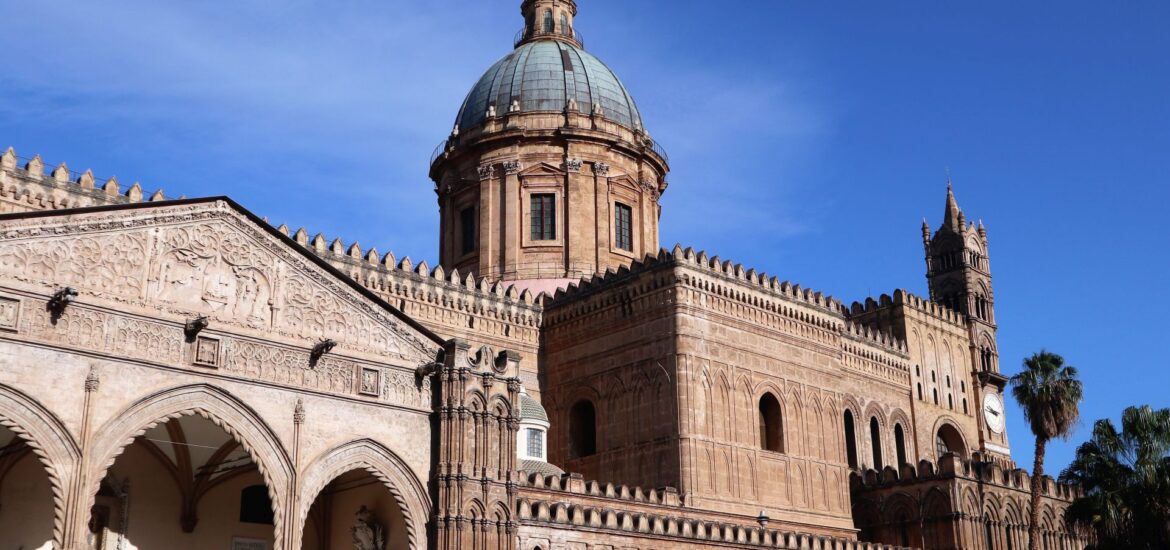
Lovely story as I love the old and ancient parts of a city as they tell the story of past gone eras.
We travelled here a few years back, driving in Sicily was an experience for sure. While at times chaotic, Palermo really grew on me. It’s such a lively city and one that I would come back to. We didn’t have time to explore the surrounding areas like I would have liked to, but always a good reason to come back.